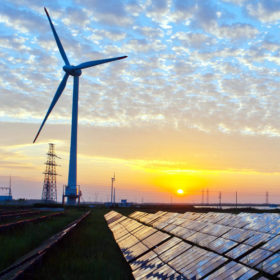Higher solar module prices: rainy days ahead for developers?
CareEdge Ratings has analyzed the key drivers of rising PV module prices and the impact on projects in India. It has also assessed the tariffs expected in upcoming bids, to ensure that developers get the same returns they were previously getting.
No end to solar supply/demand imbalance
The solar supply chain problems that began last year with high prices and polysilicon shortages are persisting into 2022. But we are already seeing a stark difference from earlier predictions that prices would decline gradually each quarter this year. PV Infolink’s Alan Tu probes the solar market situation and offers insights.
Transforming the energy storage market
Ensuring pragmatic energy storage transformation is proportional to tweaking the current battery storage chemistry. Zinc battery technology is gaining traction, changing the prevailing energy storage dynamics.
Solar module prices increased 38% in the last 20 months
Supply demand mismatch is the most crucial factor which is directly or indirectly leading to an increase in module prices. At present, demand (especially for poly-Si) far outstrips the supply. A balance between the supply and demand is essential for stabilization of solar module prices.
ALMM policy deferment, a much awaited but temporary relief to the solar market
While ALMM does support domestic manufacturers, this is not a sustained solution considering the wide demand-supply gap. Disincentivising imports could be a workable strategy when there is enough capacity back home.
Fire incidents highlight ‘burning’ issues in India’s EV ecosystem
Although we may have just about commenced our run in the electric vehicle (EV) race, it is critical that we jump-start the pace of adoption by enhancing the overall perception of EVs from a safety and longevity standpoint.
Challenges in land acquisition for solar projects
While the Central and State Governments have taken several proactive steps to make it easier for solar developers to acquire land for their projects, land aggregation remains the single biggest roadblock in implementing large-scale projects, resulting in a slowdown in the industry.
COP26: Calling for foresight of collective consciousness in energy transition
The modernization and transition of energy sources towards environment-friendly options, jointly exercised with the capacity to conserve the proven available reserves, is an action fraught with foresight. The emergence of the future scenarios and how it will all play out in the long term remain unknown to the human consciousness. However, the foresight emanating through the intertwining of the collective consciousness of human existence shall undoubtedly provide us with a potent armory to articulate our response to the emerging scenarios.
Solar sector’s response to Covid
The COVID-19 outbreak impacted the solar industry in terms of cash flow, payment collection from distribution businesses, working capital needs, workforce availability, and, most critically, supply chain availability. The government’s response to this situation was mainly positive.
Blockchain technology in renewable energy
The present system of the energy sector is centralized due to which the prosumer’s and consumers’ direct connection is yet to be formed. It’s due to persisting challenges like transaction efficiency, security and data transparency in the Indian energy market. The blockchain is a data-driven technology that helps create a very transparent process in data sharing among the peers involved in the system and sort out the challenges persisting in the energy market.















